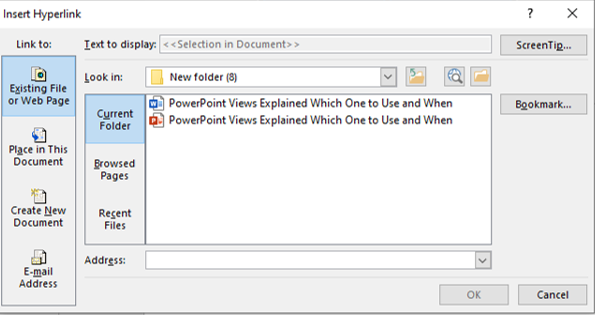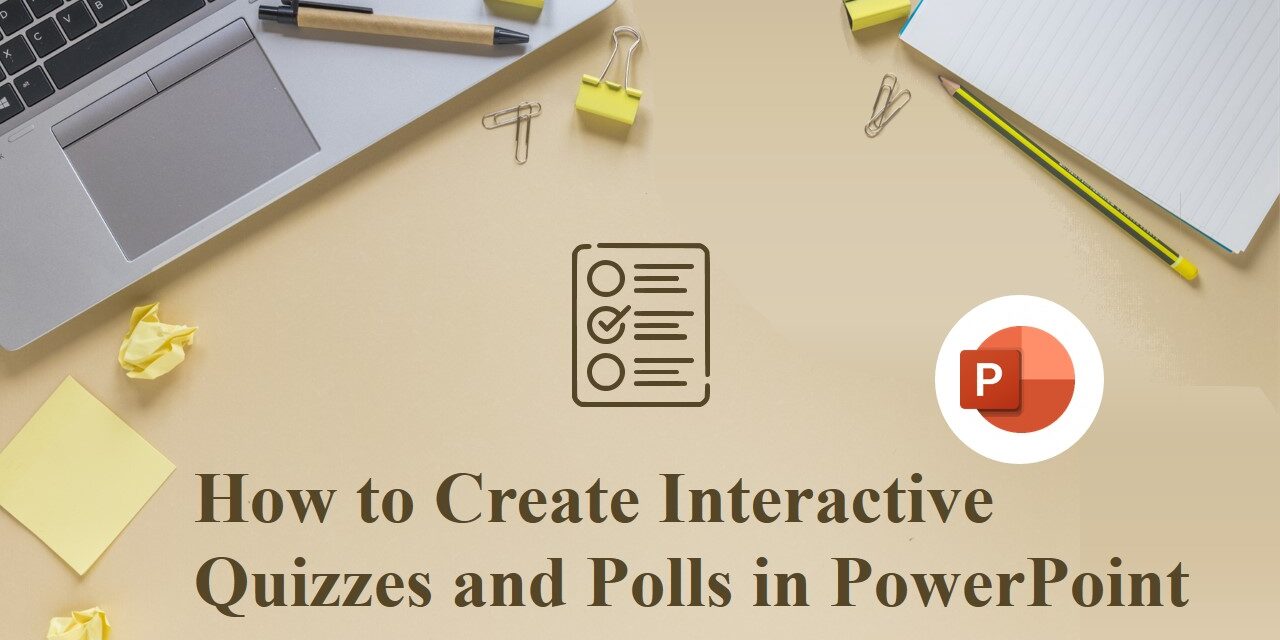Adding interactive quizzes and polls to your PowerPoint presentation is a great way to engage your audience, test their knowledge, and make your content more dynamic. Whether you’re delivering a training session, teaching a class, or presenting in a business meeting, incorporating interactive elements can make your presentation more memorable and effective.
In this guide, we’ll walk you through how to create quizzes and polls in PowerPoint using built-in features and simple add-ins.
Why Use Quizzes and Polls in PowerPoint?
✅ Engages the Audience – Keeps participants actively involved.
✅ Enhances Learning – Reinforces key concepts.
✅ Encourages Participation – Makes presentations interactive.
✅ Gathers Feedback – Helps understand audience perspectives.
✅ Breaks Monotony – Adds fun and variety to presentations.
🎯 Builds Retention – When people interact with the content, they’re more likely to remember it.
📊 Improves Assessment – Quick quizzes help presenters gauge how well the audience is absorbing the material.
🎮 Makes Learning Fun – Gamifying the session creates an exciting atmosphere, especially during long sessions.
Method 1: Using Hyperlinks to Create Quizzes
PowerPoint allows you to use hyperlinks to connect slides, enabling the creation of interactive quizzes with multiple-choice answers.

hyperlink
Step-by-Step Guide
1️⃣ Create a Question Slide
- Type your question and multiple answer choices on the slide.
2️⃣ Create Feedback Slides
- Make separate slides for correct and incorrect answers. Add explanations if needed.
3️⃣ Add Hyperlinks to Answers
- Select an answer text or shape.
- Go to Insert > Link and choose Place in This Document.
- Link correct answers to the Correct Answer slide.
- Link incorrect answers to the Try Again slide.
📌 Pro Tip: Add a “Go Back” button on the incorrect slide to let users retry.
📌 Bonus Tip: You can use icons (✔️ or ❌) as clickable options for a visually intuitive experience. This not only boosts engagement but also reinforces the message quickly.
Method 2: Using Action Buttons for Polls
Action buttons allow you to collect audience responses in real-time within PowerPoint.
Step-by-Step Guide
1️⃣ Create a Poll Question Slide
- Type your question with possible answer choices.
2️⃣ Insert Action Buttons
- Go to Insert > Shapes and select a button shape.
- Right-click the button, choose Hyperlink, and link it to a response slide.
3️⃣ Display Results
- Create slides that show the results based on different answer choices.
📌 Pro Tip: You can tally responses manually or use add-ins like Mentimeter for real-time audience participation.
🎥 Consider embedding short video explanations or follow-up insights on the result slides to deepen the learning experience after the poll concludes.
Method 3: Embedding Forms and Polls with Microsoft Forms
Microsoft Forms integrates with PowerPoint and allows you to collect responses digitally.
Step-by-Step Guide
1️⃣ Go to Insert > Forms in PowerPoint (available in Microsoft 365).
2️⃣ Create a quiz or poll using Microsoft Forms.
3️⃣ Insert the form link into PowerPoint, allowing participants to respond via their devices.
📌 Pro Tip: View real-time responses directly within PowerPoint!
🌐 Since Microsoft Forms requires internet connectivity, ensure your device has a stable connection before the presentation to avoid technical issues. Also, consider embedding forms in handout versions using QR codes.
Method 4: Adding Interactive Macros (For Advanced Users)
If you’re familiar with VBA (Visual Basic for Applications), you can create custom quizzes with automatic grading.
Basic Steps
1️⃣ Open the Developer tab in PowerPoint. 2️⃣ Write a simple VBA script to process responses. 3️⃣ Assign VBA macros to buttons for automated feedback.
📌 Pro Tip: This method works best for self-paced learning modules.
💡 Use this technique for onboarding sessions, e-learning content, or digital training kits that don’t require a live facilitator. VBA enables full automation, which is ideal for distributing reusable training decks.
Best Practices for Creating Engaging Quizzes and Polls
✔️ Keep it Simple – Use clear and concise language.
✔️ Use Visuals – Add images or icons to make questions more engaging.
✔️ Limit Options – 3-4 answer choices work best.
✔️ Provide Feedback – Explain correct answers to enhance learning.
✔️ Test Before Presenting – Ensure all links and actions work properly.
✔️ Design for Accessibility – Use readable fonts, contrast-friendly colors, and keyboard navigation wherever possible.
✔️ Use Slide Master – Customize quiz layouts using the Slide Master for consistency and time savings.
✔️ Consider Branding – Match fonts, colors, and design elements to your brand or event theme for a professional touch.
Final Thoughts
PowerPoint is more than just a slide deck tool—it can be an interactive engagement platform when used creatively. By incorporating quizzes and polls, you can transform a passive audience into active participants, making your presentation more dynamic and memorable.
🚀 Try these methods in your next PowerPoint and watch your audience engagement soar!
👉 If you’re looking for stunning PowerPoint templates that support interactive elements, explore our Free Download Section at SlideMasterz to get started with high-quality designs that make quizzes and polls easier to implement.
Read our next blog here:







